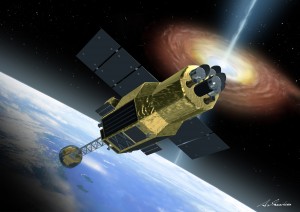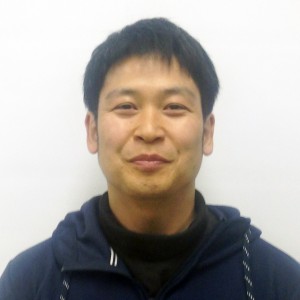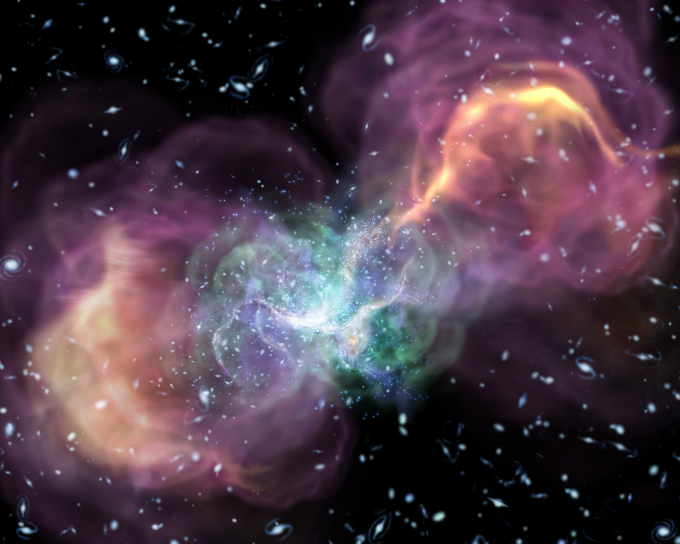The High Energy Astrophysics Group carries out observational research on high-energy cosmic phenomena, mainly using satellites and balloons. The Universe is rich in high-energy sources such as black holes, neutron stars, hot plasmas, supernova remnants, and gamma-ray bursts, where high-energy particles are accelerated. Our group uses X-ray and gamma-ray observations in an attempt to form an understanding of such phenomena, in addition to the evolution of celestial objects. We are also developing future X-ray and gamma-ray detectors. In the past, we have been involved in the development of the Suzaku hard X-ray detector and the Fermi gamma-ray silicon strip sensor. Currently, we are developing the hard X-ray imager (HXI) and soft gamma-ray detector (SGD) instruments for use on the ASTRO-H satellite and in PoGOLite balloon flight experiments. We are also working on the application of radiation detectors for environmental radiation measurements.
[Group Members] [High Energy Astrophysics Group Web Site]
What is ASTRO-H ?

Astro-H conceptional drawing (Illustration by AKIHIRO IKESHITA/courtesy of JAXA)
ASTRO-H is the sixth Japanese X-ray satellite and will be launched in JFY 2015. It will be equipped with an excellent X-ray spectrometer, an X-ray CCD camera, a HXI, and a SGD. The purpose of the satellite is to perform high-resolution X-ray spectroscopy on high-energy cosmic phenomena over the widest ever energy range. ASTRO-H is expected to yield important information on the evolution of galaxy clusters, which represent the largest systems in the Universe, the evolution and space-time structure of black holes by studying accretion phenomena, acceleration mechanisms for high-energy particles, and hadron physics in neutron stars. Our group is a principle participant in the development of the HXI and SGD, in collaboration with ISAS/JAXA, The University of Tokyo, Nagoya University, and others. Our graduate students are also actively engaged in R&D studies, instrumental design, performance tests, and calibrations, and have made presentations at many conferences. We are also aiming to collaborate with workers in other fields, such as mechanical design, electronics, programming, and radiation measurements.
Group Members

Yasushi Fukazawa (Professor)
I carry out research into high-energy cosmic phenomena using X-ray and gamma-ray observations, with a particular focus on galaxy clusters, active galactic nuclei associated with supermassive black holes, and stellar-mass black hole binaries. By observing galaxy clusters, I’d like to understand the evolution of the most massive objects in the universe and their relation with particle acceleration. In order to determine how supermassive black holes have evolved, I probe the materials around black holes based on their X-ray emission. Another research theme is the mechanism of jet launch from supermassive black holes, and I am focusing on the similarity of X- ray and gamma-ray emissions from supermassive and stellar-mass black holes. I have also been involved in the development of X-ray and gamma-ray instruments, such as ASCA/GIS, Suzaku/HXD, Fermi/LAT, and ASTRO-H/SGD. I am a deputy PI (principle investigator) for the ASTRO-H/SGD.

Tsunefumi Mizuno (Associate Professor)
I have been studying cosmic rays, which are charged particles with relativistic energies that have origins outside of the solar system. Instead of directly measuring cosmic rays on Earth, I investigate X-rays and gamma rays produced by these charged particles when they are accelerated by objects such as black holes and supernova remnants, or in interstellar space, in order to understand where they are produced and how they propagate through interstellar space. For this purpose, I have been using the Japanese X-ray satellite Suzaku and the international gamma-ray satellite Fermi. I also aim to perform polarization measurements on X-rays and gamma rays from black-hole binaries and pulsars in order to obtain information on the structure of accretion disks and magnetic fields, which is difficult, if not impossible, using direct imaging. For this purpose, I am participating in the balloon mission PoGOLite and the next X-ray satellite mission ASTRO-H.

Hiromitsu Takahashi (Assistant Professor)
Neutron stars and stellar-mass black holes are thought to be created after supernova explosions of stars with >10 solar masses. They are highly dense, possess a strong gravitational field, in additional to a magnetic field stronger than anything that can currently be created on Earth. I have been studying such compact objects and the accreting or outflowing material surrounding them using satellite-based X-ray and gamma-ray observations. To achieve higher sensitivity, I have been developing detectors and software for satellites, and will participate in future international missions of the X-ray satellite, ASTRO-H, and the balloon-borne polarization detector, PoGOLite. To develop such detectors for use on board satellites, I have also been producing ground-based radiation detectors to measure environmental gamma-rays and neutrons.

Yuusuke Suda (Assistant Professor)
There are various high energy phenomena in the universe. From such sites, electromagnetic waves are emitted in a wide range of wavelength bands, and they can tell us spectacular state of the site as a messenger. I have been studying the physics of high energy phenomena, especially gamma-ray bursts the most violent explosion in the universe. We observe very high energy gamma-rays by using Imaging Atmospheric Cherenkov Telescopes which use the atmosphere as part of its detector component. I am a member of both the MAGIC international Collaboration and the next generation ground-based observatory for gamma-ray astronomy CTA, and am collaborating with excellent scientists from various countries. I am working in R&D for future MeV gamma-ray astronomy as well.

